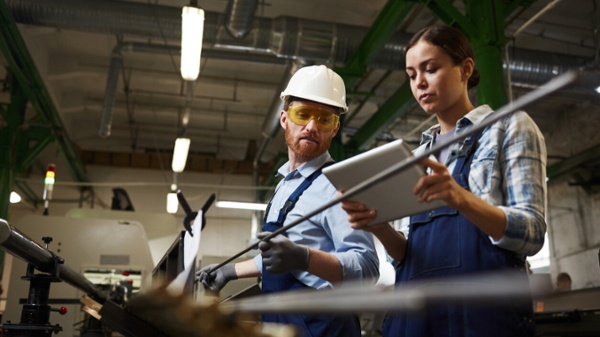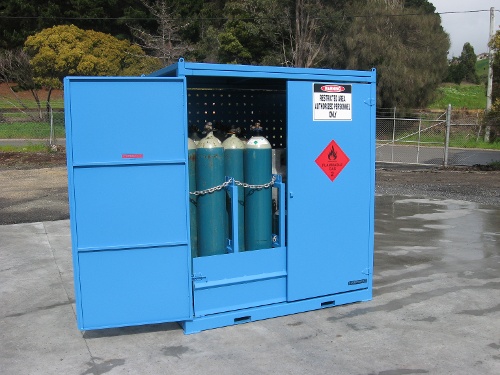As time passes, your chemical controls and onsite equipment can lose its effectiveness due to age or damage. Therefore, it’s essential to have a preventative maintenance schedule in place to ensure that your onsite chemicals remain controlled. Without the maintenance of your chemical controls, hazards can occur that may affect workers, property or the environment. To help you develop a preventative maintenance strategy, we’ll be highlighting some areas in your workplace that require inspections and audits, as well as a routine preventative maintenance to ensure health and safety.
What is Preventive Maintenance?
Preventive maintenance refers to regular maintenance activities that can prevent any unexpected failures in equipment. Preventative maintenance may be performed on machinery, tools, equipment, chemical storage equipment, handling aids and other mechanisms to prevent any unexpected failures from occurring.
“A person conducting a business or undertaking (PCBU) must ensure that a system used at their workplace for the use, handling or storage of hazardous chemicals is used only for the purpose for which it was designed, manufactured, modified, installed or supplied.”
Safe Work Australia
Developing a Preventative Maintenance Plan
Creating a preventative maintenance strategy is more than just planning on carrying out regular repair work. It’s about programming a series of regular site inspections and safety audits to assess the integrity of things like chemical containers, safety equipment and storage facilities, while ensuring everything is being used correctly.

Your preventative maintenance strategy may include a range of inspections and audits, as well as a plan for scheduled maintenance.
Your maintenance plan would include three different types of inspections:
Ongoing Inspections
At most basic level, ongoing inspections consist of spot-checks in work areas. They are normally part of a leading hand or supervisor’s daily responsibilities. Your preventative maintenance schedule might also include daily pre-shift inspections to ensure the operational integrity and safety of equipment before workers commence their shift (ie. is the ventilation system working correctly?)
Handover Inspections
When new equipment or machinery is introduced to the worksite, a handover inspection is required. Maybe you’ve installed a new flammable liquids store or decanting station, the handover inspection would ensure that there are no leaks and the equipment operates seamlessly (ie. are those self-closing doors closing automatically without jamming?).
Scheduled Audits
Scheduled audits usually occur at programmed intervals. They can bey carried out by an appointed in-house team or by external safety auditors and professional consultants. This type of audit is more objective than daily inspections, which very often become a mere ‘tick-and-flick’ exercise if production is running behind schedule.
Your Maintenance Plan by Location
Most preventative maintenance plans have an Inspection Checklist prepared for each location on the job site. We’ve listed here some of the things to check in each of 3 common areas.
#1. Safety cabinets, chemical stores and decanting stations
Check the walls of under-pallet bunds for cracks and any other wear and tear that could cause the bunding to fail.
- Make sure spill bunds are not loaded past their holding capacity.
- Create safety alerts based on expiry dates of chemicals. Check chemical containers.
- Check the integrity of outdoor chemical storage areas after storms or damaging weather.
- Test the doors and closing mechanisms on safety cabinets to ensure they in proper working order.
- Ensure spill sumps are cleared after leaks and then checked periodically.
- Test the integrity of stakes and footings that fix portable chemical stores or decanting stations to the ground.
- Make sure chemical stores and all decanting equipment is correctly earthed.
- Perform routine housekeeping checks (lids on containers, containers put away clean without chemical residue, chemicals stored according to hazard class).
#2. Gas bottle cages, trolleys, and racking
For preventative maintenance with equipment for Gas 2 storage and handling, such as gas bottle cages, gas cylinder storage, gas bottle trolleys and racking, the first step is to check for any gas leakage.
You can check for visible signs of damage of leakage by being aware of any hissing sounds, strange odours or damaged gas cylinder mechanisms.
If a full cylinder is lighter than expected, this may also be a sign that it has been leaking gas.
For gas handling and storage equipment, we recommend that you:
- Carry out routine housekeeping checks (cylinders segregated according to hazard class, valves closed, cylinder caps in place, individually restrained using safety straps or chains).
- Check the integrity of gas connections and fittings, valve threading, cylinder head, burst discs. Are cylinder valves being over-tightened?
- Program safety alerts into your calendar based on cylinders test dates and purchasing times.
Some general housekeeping checks for your gas storage equipment may include:
- Inspect the gates to gas bottle cages to make sure they are secure and locked
- Check gas bottle trolleys are level and that the wheels turn easily
- Inspect storage for missing or damaged racking
- Ensure that safety straps safely secure the cylinders during gas storage
Gas stores must have safety straps that keep the cylinders secure during storage.
#3. Hazardous chemicals in the laboratory
Why is preventive maintenance important in the laboratory?
Due to the multiple classes of chemicals required for laboratory operations, as well as the interior location requiring indoor chemical storage, preventative maintenance is essential to ensure that all controls and equipment are ensuring a reduction of risk. Lab equipment including chemical containers, storage, ventilation systems and PPE must remain in good condition to reduce the hazards associated with laboratory chemicals.
Some general housekeeping tasks for your laboratory chemical storage may include ensuring that:
- All incompatible substances are properly segregated, including acids and alkalis
- Chemicals aren’t left or kept under a sink or near water
- Cabinets are in good working order, with no chemical residue, signs of age or damage
- Lids are in place and secured on chemical containers
- Ventilation systems are clean, maintained and working as they were intended to
- Containers are cleaned before being put back into storage, so that no residue remains
To ensure that chemical hazards are controlled, make sure you include the following in your preventative maintenance checklist for your lab equipment and apparatus:
- Inspect all laboratory glassware to make sure that it is clean, sterile and has no cracks or holes.
- Inspect PPE for damage and make sure it is also clean and hygienic.
- Program professional maintenance and equipment calibration into your calendar to ensure everything is working correctly and giving accurate readings.
Need a safety cabinet checklist?
Taking Corrective Actions
Safety audits and inspections are of no use if action is not taken when a fault or hazard is discovered. When you create a preventative maintenance plan, you’ll need clear procedures, so staff know how to respond.
These corrective procedures might include:
- Making supervisors or other workers in the area aware of the immediate danger.
- Shutting down or "locking-out" machinery or equipment that cannot be brought to a safe standard until repairs are carried out.
- Erecting warning signs and isolating the area until the hazard is removed.
- Reporting the faults to senior management.
- Notifying the maintenance department or arranging professional repairs with external contractors.
Your maintenance program should be well documented and subject to regular review. You’ll also need to adapt and update your program whenever you start using new chemicals, introduce new equipment or machinery, or when the job site experiences major change.
Hazardous Chemicals: Preventative + Maintenance
Preventative maintenance is an essential step in a compliant risk management plan. To learn how to develop a comprehensive risk management plan and achieve compliance, download our free eBook How to manage the risk of Hazardous Chemicals in the workplace. It’s easy to read and contains the tools and templates you need to get started. Plus, this helpful resource is free.
Joining the team as a Dangerous Goods Storage Consultant, Melissa Hampton became Storemasta's Marketing Manager in late 2021. With extensive knowledge and experience in chemical compliance, Melissa is responsible for leading the Marketing team and helping shape their marketing strategy. In her spare time, you can find Melissa hiking, swimming and enjoying the great outdoors in beautiful north-west Tasmania.

